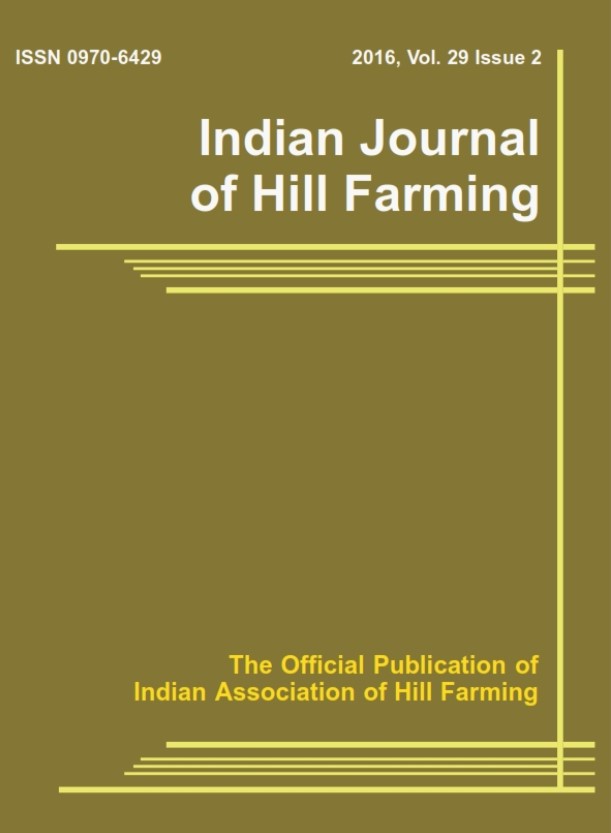Development of water production function for garden pea (Pisum Sativum L.) under mid hills of Meghalaya
Keywords:
Deficit irrigation, Maximum allowable depletion, Garden pea, Pulse productivity, Soil moisture, Water production functionAbstract
Pulses are the sources of low cost protein supplements and grown well under assured irrigation supply. However, potential productivity in pulse could not be assured due to erratic water inputs. Hence, considering all other parameters as constant, a relation between yield and water input needs to be developed, which ensures judicious water application. A field trail was carried out to assess the crop performance of garden pea cultivars at different moisture regimes and develop crop water production functions under mid hills of Meghalaya during 2021-22 winter seasons. Irrigation scheduling was done based on the maximum allowable depletion (MAD) of the available soil moisture to different varieties of garden peas. The agronomic field trial was laid under split plot design with four levels of irrigations, i.e., (I1: 20% of MAD, I2: 40% of MAD, I3: 60% of MAD and I4: 100% of MAD) under main plot treatment, and with four different cultivars (V1- VM 10, V2 - VM 12, V3 - VL Sabji Matar 15, V4 - VL Sabji Matar 13) under sub plot and was replicated thrice. The highest water productivity was found in treatment I4 (3.93 kg m-3) over I2 (3.56 kg m-3) and I3 (3.34 kg m-3) and I1 (2.63 kg m-3). Crop water production functions of all cultivars, i.e., relation between the yield and total water used (irrigation + effective rainfall) was obtained as Y = -0.0001X2 + 0.0633X - 1.5064 (Y = yield in t ha-1 and X = amount of water used, mm); with R² = 0.96. Irrigation treatment with 20% of MAD resulted in higher green pod yield whereas higher water productivity was registered for irrigation scheduled with 100% of MAD.




